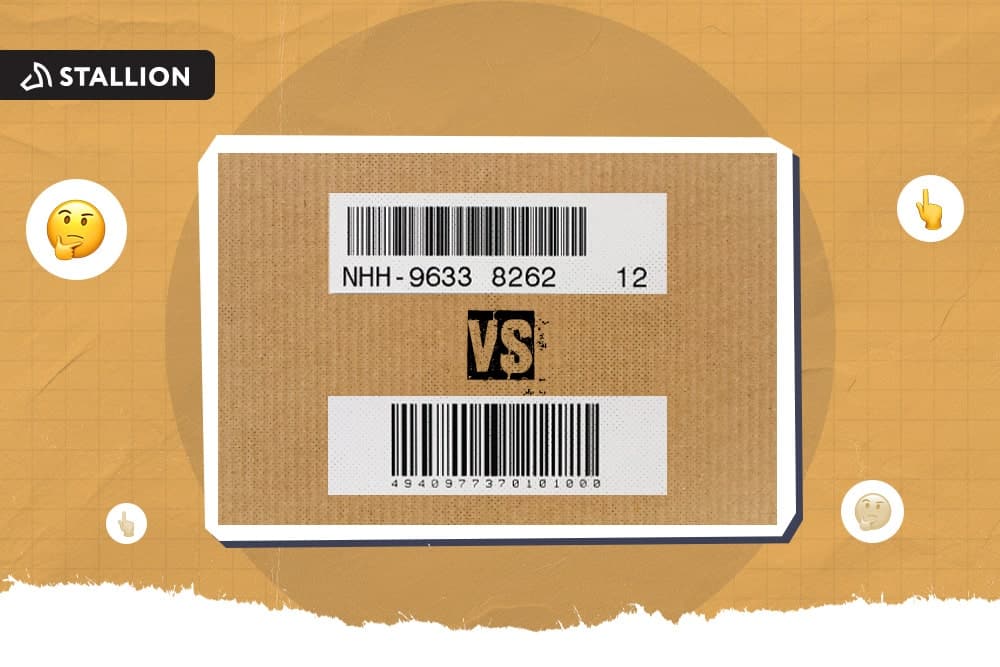
This year's current events have given serious financial repercussions to businesses. For most companies, operating expenses are at an all-time high, while income is relatively low. In fact, the shipping and logistics industry is one of the hardest-hit areas as countries exercise extra caution with movement in and out of their borders. This is why it is understandable that business owners hate nothing more than surcharges on top of the already increased rates when shipping from Canada to USA. Fortunately, surcharges are things that you can avoid; here's what you need to know about them:
Brick and mortar stores are forced to shut down due to the financial crisis brought about by the pandemic. Already, more than 13,000 US stores have closed in the first half of 2020 alone--a phenomenon Forbes' called "the retail apocalypse." Big and small businesses alike have moved to e-commerce in an attempt to escape debt brought about by the failure of sales to meet the operational needs.
With everyone in cost-cutting mode, business owners surely need to find a way to make operations as low as possible--an option made possible by online stores. However, even logistics companies have had to increase their fees.
"As the virus's impact continues to generate a surge in residential deliveries and has also generated a surge in oversize, hard-to-handle packages, we have experienced increased operating costs across our network," FedEx said in a statement (source). The many couriers that increased their fees are FedEx, UPS, and Canada Post.
An increase in shipping costs will definitely affect businesses in more ways than one. To cope with this change, business owners should visit their costs and choose which they are the least willing to lose: profit margin or conversion rate. Increasing the product price will maintain the profit margin but may discourage both existing and potential customers. Keeping the current product price in tack can maintain the frequency of purchases but take a blow on your profit.
Whether you choose to sacrifice profit margin or order frequency for the sake of business continuity, business owners should most focus on decreasing unnecessary expenses, shipping surcharges included.
In addition to how much shipping from Canada to the US is, surcharges are fees that you pay on top of the usual price. While surcharges generally cost a minimum amount, things can get pretty serious when it adds up, especially when you're shipping overseas. To avoid surcharges from eating up your already thriving profit, here are the five most common surcharges you can find in your invoice and how you can avoid them:
Address correction fee is something you pay when you input an incomplete address. This fee also applies to when you need to change shipping details. This fee can range from $11 for regular deliveries to $60 per package for express shipments. As obvious as it may sound, the best way to avoid paying for this fee is to ensure that you provide complete and accurate details. Also be in close touch with the recipient so you can verify if they are available to receive the package to avoid delivery return and further additional costs.
Although you can expect how long Canada standard shipping takes, there will still be instances in which your package will be delayed or shipped in advance for a day or two. Because of these changes, the recipient may not always be available to receive the parcel, causing reattempts in delivery. In such cases, a delivery reattempt fee costs approximately $48 per shipment or $0.0513 per pound (whichever is greater). To avoid reattempts in delivery, make sure that you put in accurate and complete recipient details. It would help if you also kept in touch with your recipient to make sure they are free or available to accept their parcel.
Couriers make use of standard pouches and box sizes so you can expect your package to cost more if it doesn't fit the regular containers or weigh more than what the containers should carry. You can also expect some additional handling fees for bigger packages. The cost can range from $8.50-50. Avoid paying for an oversized package surcharge by making sure that your products meet the standard size requirements. You can also opt to use minimal packaging to lessen the size and the weight of the package. Lastly, consider looking for ways to pack your products in a compact form in order for it to fit the standard parcel sizes.
A Saturday surcharge, like what the name states, is charged on deliveries made during weekends or outside the normal five-day business days. An additional charge of $13.49 can be expected for deliveries and $14.95 for pickups. You can avoid paying for this fee by making use of express shipping or priority mail as these functions do not require additional weekend charges.
Unfortunately, there are specific fees that are out of your control and prices that you have to pay to make shipping from Canada to US possible. Although these fees are technically already part of the bill, it still pays to know what you're paying for to be able to strategize financially further. The following are three surcharges that you can't avoid but still have to know about:
The fuel surcharge is charged on international shipments and depends on the oil price on the delivery day. Because the price of oil is ever-changing, there is also no exact price that you can expect.
A Delivery Area Surcharge (DAS) is added when the recipient's address is outside of your chosen courier's usual serviceable area. This costs around $26 per shipment or $0.26 per lb. On the other hand, a residential surcharge is added when you use an address outside of the city or the business district, costing around $2.55-3 per package. This fee is charged because, unlike office addresses with fixed working hours, the receiver's availability for a home address is indefinite, ergo is prone to delivery reattempt.
A package insurance is something you pay to safeguard your package. Couriers will ask you to declare the worth of your package so they know how much to expect if an unfortunate event happens to your parcel. In return, customers must pay an additional package insurance fee for boxes above $100. Depending on your chosen courier, you can expect a $0.80-2.40 insurance fee per $100 value of your package.
The world's current situation has undeniably posed a challenge and a threat to both established and aspiring business owners. Entrepreneurs are forced to monitor cash flow closely and revisit business strategies. With the surge in demand for shipping and logistics, it is most important to find an affordable courier partner that can perform on top of its game despite the current situation.
Fortunately, Stallion Express is here to make ends meet and to help business owners make shipping from Canada to US possible. To know more about affordable and reliable shipping fit for your business needs, contact Stallion Express today for a free consultation.
Aman looks after the content marketing department at Stallion Express. He is passionate about helping businesses grow by providing informative and up-to-date trends in the eCommerce industry. Outside the office, you can find him on the soccer field cheering on Real Madrid.



Can our fellow Torontonians relate?
-
#smallbusiness #business #entrepreneur #socialmedia #shipping #ecommerce #canadianecommerce #shopify #poshmark #b2b #saas #etsy #ebay #canada #canadiansmallbusiness #shoplocalcanada #entrepreneur
#toronto

Here’s your quick hassle free shipping from 🇨🇦 to 🇺🇸 as a business owner!
-
Any questions?! Leave them 👇🏻 and save this video so you don’t forget!
-
#smallbusiness #business #entrepreneur #socialmedia #shipping #ecommerce #canadianecommerce #shopify #poshmark #b2b #saas #etsy #ebay #canada #canadiansmallbusiness #shoplocalcanada #entrepreneur

Meet @drinkbenny a 🇨🇦 female founded energy drink brand! Instead of focusing on their products, they’re taking a unique approach by hosting in person events in different Canadian cities to offer an experience for their community 🧡
-
What are your thoughts on in person events? 💭
-
#smallbusiness #business #entrepreneur #socialmedia #shipping #ecommerce #canadianecommerce #shopify #poshmark #b2b #saas #etsy #ebay #canada #canadiansmallbusiness #shoplocalcanada #entrepreneur

Do you know the difference between DDU and DDP when shipping internationally 🌏 ?
-
Questions? Leave them below! 👇🏻
-
#smallbusiness #business #entrepreneur #socialmedia #shipping #ecommerce #canadianecommerce #shopify #poshmark #b2b #saas #etsy #ebay #canada #canadiansmallbusiness #shoplocalcanada #entrepreneur

Here’s a quick hack to save time from choosing multiple postage options
↪️ Turn on the lowest postage rate automation to save you time!
-
Questions? Leave them below! 👇🏻
-
#smallbusiness #business #entrepreneur #socialmedia #shipping #ecommerce #canadianecommerce #shopify #poshmark #b2b #saas #etsy #ebay #canada #canadiansmallbusiness #shoplocalcanada #entrepreneur
